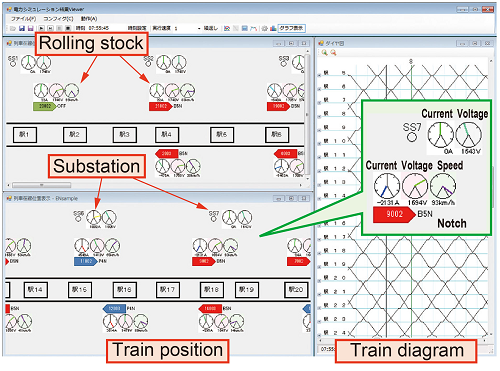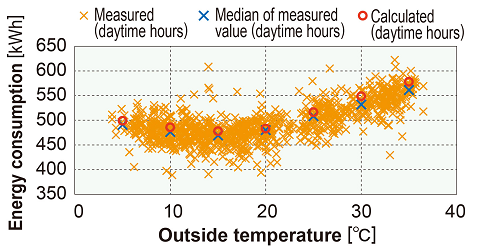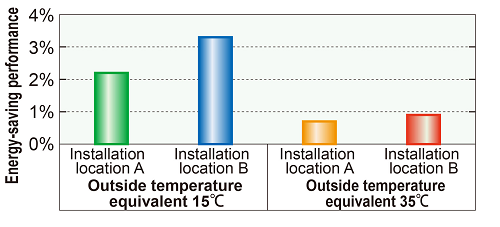20. Train operation power simulator to evaluate energy-saving strategies
Various energy-saving strategies relating to ground side facilities and onboard systems are being studied, from the view point of reduction of energy consumption, however, in order to assess the performance of these strategies, there is a need for much more accurate energy calculations.
A simulator for calculating energy consumed by trains in operation has already been developed, which produces detailed calculations of the current/voltage interaction between multiple substations and multiple trains, and make it possible to reflect changes in acceleration due to variation in voltage to speed profiles.
This simulator has now been modified to include a function that generates speed profiles to reproduce average driving operations in commercial traffic. In addition, it can produce practical scale calculations assuming any type of commercial line, that is, any variety of line, rolling stock, and so on. (Fig. 1).
In terms of energy efficiency, parameters such as auxiliary machine power consumption, running resistance and braking operation, etc., significantly influence energy consumption calculation results.
To resolve this issue, a new method has now been developed to make use of vehicle related big data collected through on-board information recording systems in order to set parameter values that are as close as possible to reality.
A comparison of actual consumed energy measured during commercial operation on an actual line with estimated values obtained through the new simulator demonstrated that the reproduction of real conditions had been improved from a level of accuracy of about 20-10% to within 5%, confirming a significant step up in performance (Fig. 2).
This outcome demonstrated the applicability of the train operation power simulator for evaluating energy-saving strategies.
The simulator was therefore applied to estimate the energy-saving performance of a newly introduced energy storage device. It was found that its energy-saving performance varied between 0.7%~3.3% depending on installation location and outside temperature.



